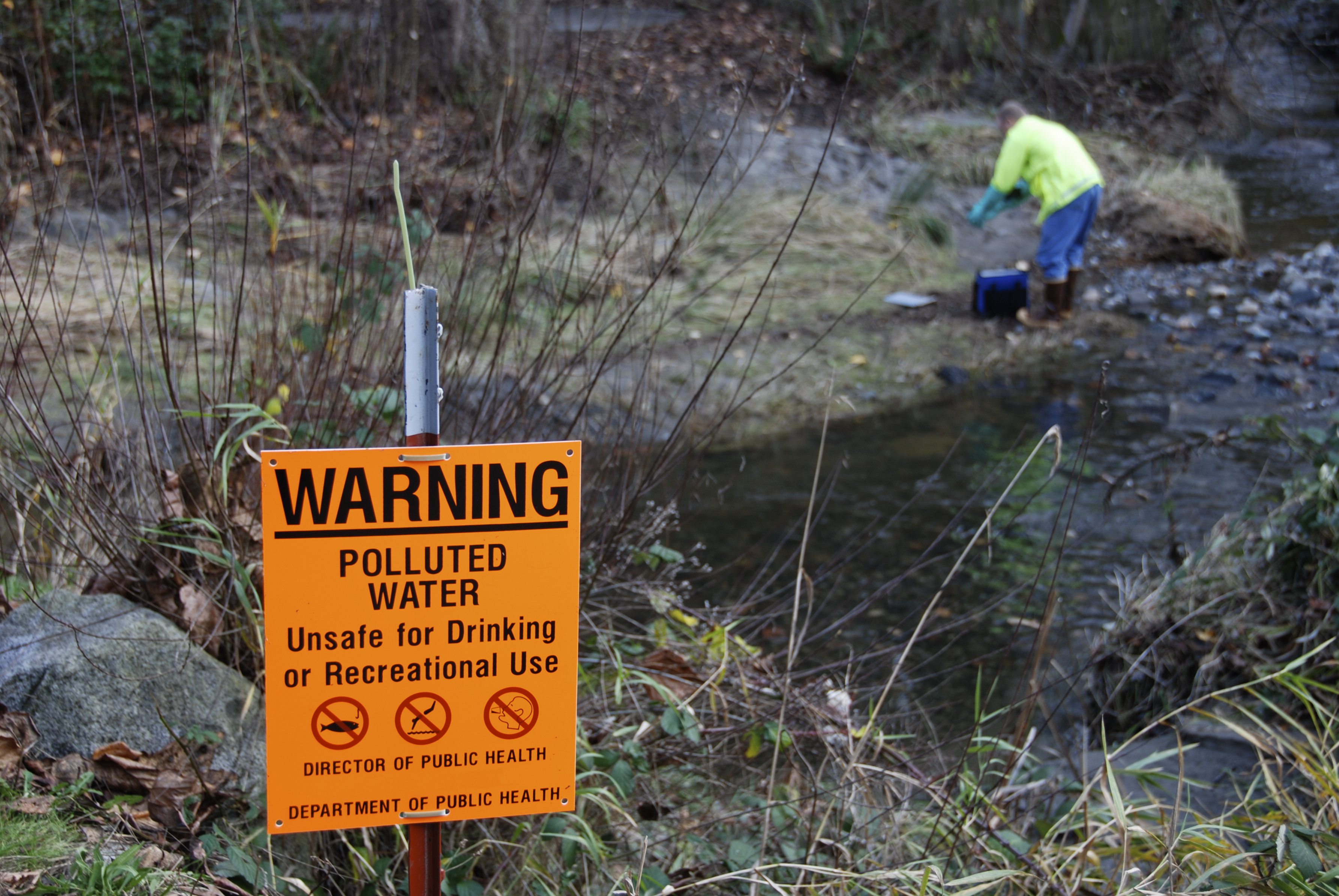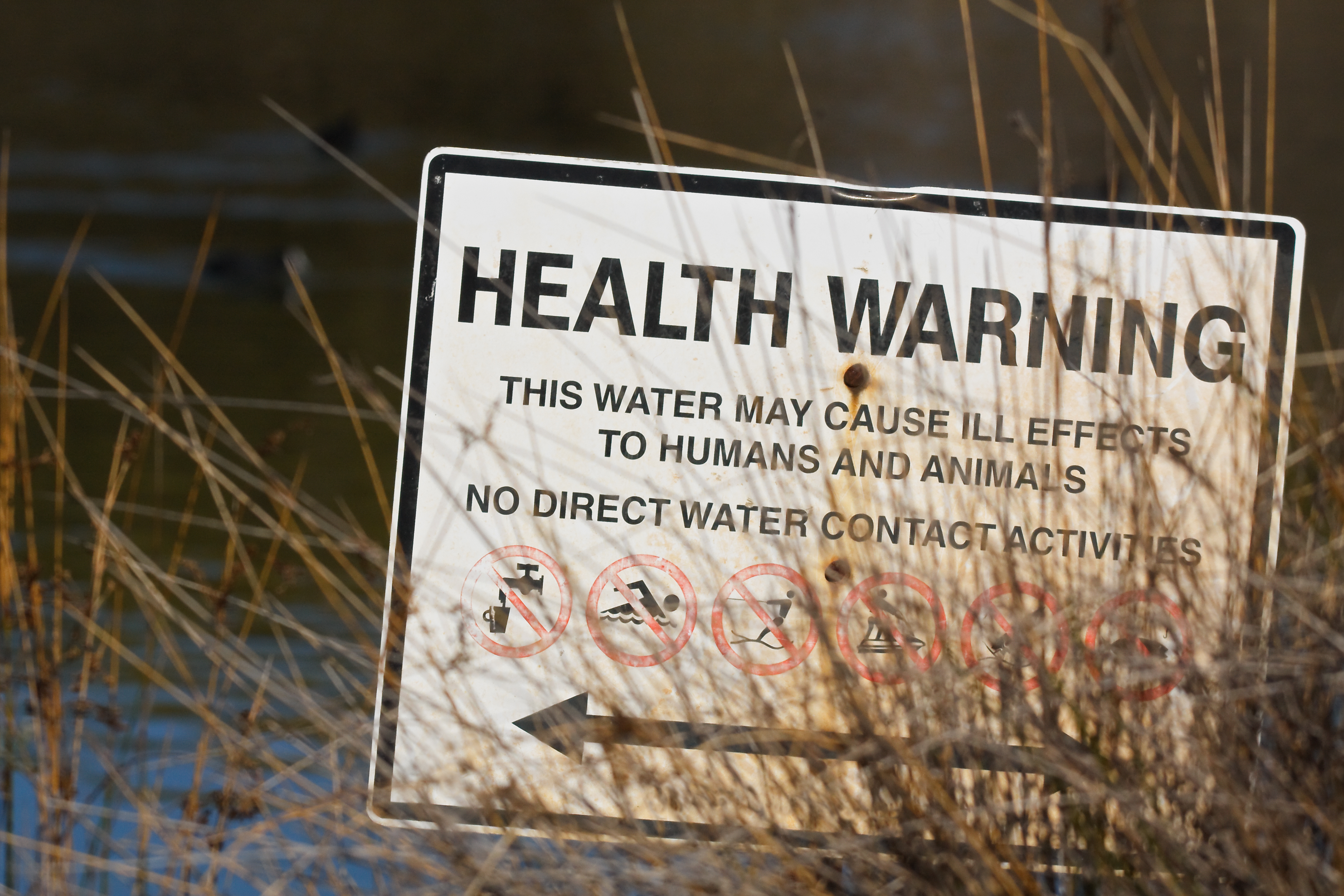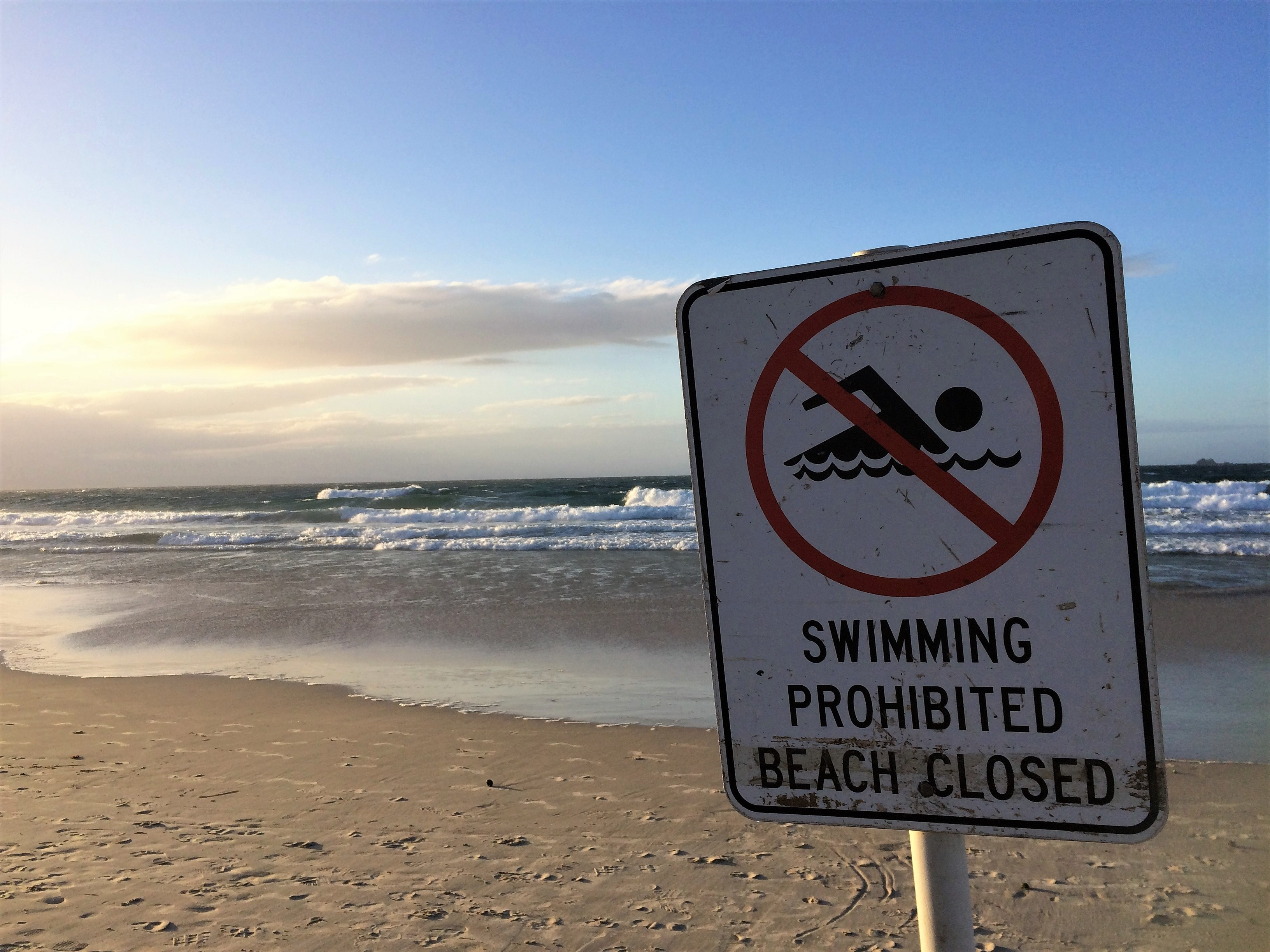Assessing microbial risk to protect against infectious human diseases, preserve environment
BAE researcher uses modeling to inform healthy decision making
August 23, 2023
Everyone knows that air, water, soil and food are all vital components to human existence. But what happens when contamination occurs in one of these biosystems and persists with little to no detection? It festers and perpetuates, creating more complicated issues.
Detecting the source and tracing its movement through the environment is paramount to discovering viable treatment solutions. It's a high stakes endeavor given the potential exposure to infectious diseases and other harmful human health effects.
Jade Mitchell, MSU Department of Biosystems and Agriculture Engineering (BAE) associate professor and BAE associate department chair, studies chemical and microbial contaminants, determines their risks, and provides science-based information to treat and remediate the crises on hand.
Her expertise spans the safety of leafy greens in storage to the transport of antimicrobial resistance in manure runoff. The majority is centered on water quality and assessing the risk of waterborne pathogens. Whether it's drinking water, recreational waterways or even indoor low-flow plumbing, Mitchell's research affects many facets of everyday living.
She utilizes an approach called quantitative microbial risk assessment (QMRA) to trace the path of microbial contaminants and project their fate and potential harm. While the contaminants can lead to numerous types of infectious diseases, Mitchell said it boils down to weighing exposure levels against the potential consequences.
By forming interdisciplinary teams of experts, including engineers, biologists, and social scientists from across the nation, Mitchell focuses on results that are robust, far reaching and inform water quality management and mitigation techniques.
It's about the ability to understand risk in a quantitative way, not just a perceived way and use that information and data to make informed decisions, she said. We know this from COVID. What should have been a preventive focus on contributions to the risk and to exposure to COVID instead ended up being efforts to deal with the severe health implications already on hand. This limited focus reduces our ability to prevent infections and diseases.
Her work, funded in part by MSU AgBioResearch, hones in on the integration between understanding risks in a quantitative sense and using that data to make informed treatment recommendations. Mitchell further explains that determining risks is about looking at probabilities and statistics, which are not always all that intuitive.
'my research develops and applies integrated computational frameworks for predictive microbiology, fate and transport through the environment, and human-pathogen interaction to estimate risks, she said. It also links risks to appropriate risk management strategies and evaluates options to reduce risk through decision analytic techniques.
A dedication to training others about QMRA
In 2020, Mitchell received a $2.5 million National Institutes of Health grant to lead a QMRA research training program. It's a renewal of a continuing education program initiated in 2014, also through NIH funding. She is passionate about increasing the capacity of researchers to do the type of integrated and interdisciplinary research she undertakes. Through the NIH-funded training programs, Mitchell has helped several hundred graduate students, postdoc candidates and early career individuals gain vast and valuable experience.
 Called QMRA IV-Quantitative Microbial Risk Assessment Interdisciplinary Vehicle: For Addressing Emerging Global Health Risks, the new grant builds on her previous QMRA III (Interdisciplinary Instructional Institute) project in developing cross-training for those with biomedical science, microbiology, public health and engineering backgrounds.
Called QMRA IV-Quantitative Microbial Risk Assessment Interdisciplinary Vehicle: For Addressing Emerging Global Health Risks, the new grant builds on her previous QMRA III (Interdisciplinary Instructional Institute) project in developing cross-training for those with biomedical science, microbiology, public health and engineering backgrounds.
Additionally, it focuses on expanding mentoring networks for continued learning, creating new research through case studies, and establishing online infrastructure to make it easier for those without modeling or computational backgrounds to do QMRA. Helping to provide science-based knowledge that informs legislative issues is of particularly high importance to Mitchell.
Ideally at some point, risk assessment work is used to translate science to policy, she said. There are many other factors [e.g. social, cultural, economic and political] that come into play when using science to develop a policy This was highlighted during the COVID-19 pandemic.
Helping to protect the safety of recreational waterways
Mitchell's lab has extensive experience researching water pathogens in different natural and engineered environments that have not yet been fully explored. She develops frameworks for integrated models that describe contaminant behavior under multiple conditions and characterize risks, ultimately leading to management strategies.
One recent study is the work of Mitchell's former graduate student Kara Dean, who earned her Ph.D. from MSU in December 2022, that examined and estimated the persistence of microorganisms in natural environments. Prior to completion of this study, Mitchell said there had been a traditional consensus in the water science community to assume exponential decay meaning the amount of the microbial contaminant proportionally decreases in accordance with time. After examining hundreds of datasets, the MSU researchers found evidence to the contrary.
Kara's work shows that generally some quantity decays fairly quickly, but the remainder tails off for longer periods of time in most cases and those are the pathogens that cause higher health risks, Mitchell said.
 Dean's study caught the eye of Great Lakes Beach Association and she was selected to present her findings to the organization. With the Great Lakes and numerous bodies of water in Michigan, this information is critical in the event of some type of contamination to determine how long to prohibit swimming, close beaches and/or restrict fishing.
Dean's study caught the eye of Great Lakes Beach Association and she was selected to present her findings to the organization. With the Great Lakes and numerous bodies of water in Michigan, this information is critical in the event of some type of contamination to determine how long to prohibit swimming, close beaches and/or restrict fishing.
For instance, Dean and Mitchell's study proved particularly insightful for a sanitation district in Virginia following a sewage spill. They helped determine remediation methods and evaluate potential health risks. Fortunately, Mitchell said the water quality managers there had been ahead of the game in terms of monitoring for specific pathogens. But that's not always the case.
Recreational water quality regulations are based on two microbial indicators E. coli and Enterococci which are much easier to monitor quickly than other specific pathogens. The new research from Mitchell's lab helps move beyond these two basic indicators to study lesser-known contaminants.
This has come in useful for a new project with the Great Lakes Water Authority (GLWA)to help the organization prioritize legacy and emerging waterborne contaminants that could potentially impact treatment options. GLWA considers what pathogens need to be monitored and what research needs to be done to improve the quality of drinking water, which it supplies to 40% of Michigan.
Utilities cannot simply focus on what shows up in the media like PFAS or uranium, Mitchell said. The approach needs to be more systematic in terms of evaluating potential harm for people, especially those in Michigan. Our focus needs to be what is or what we think would be a potential harm based on our systems the source water and exposure pathways including our infrastructure.
Examining both chemical and microbial stressors across many drinking water pathways could have vital long-term impacts for the GLWA, making this project one of Mitchell's most anticipated to date.
The feeling is mutual, according to John W. Norton, GLWA director of energy, research and information, who is pleased to be partnering with Mitchell and her research team on this latest endeavor.
As a huge public water utility, we must carefully spend public dollars to address priorities and not perceptions. Professor Mitchell's research efforts are critical to our operations and overall decision making as they put an actual science behind prioritizing and addressing risks to public health and the environment, he said.
We cannot operate on a risk-of-the-day type of approach, but instead need to focus on addressing the most critical issues first. Media reports and public opinion are filled with conjecture concerning risks such as PFAS and other emergent contaminants, various pathogens, and other dangers. Professor Mitchell's research is critical to identifying, and then prioritizing, the entire universe of risks to our water system. Her efforts are critical to base our operations and decision making on addressing actual risks and not the perceived risks of the public, the media, or any other entity.
Persistence as the problem
Food is another area of study in which Mitchell examines the persistence of waterborne pathogens. Recently she studied the survival of pathogens on leafy greens in storage. The researchers learned as they had projected that most outbreaks of leafy greens, especially lettuce, have happened in places much farther from the harvesting and processing sources but have lasting longer-term effects.
'the pathogens go into a persistence state when they are transported. The pathogens go sort of dormant during transportation from where they're grown, although they're still present at point of consumption, she said.
 'this is not just a food issue as much as it is a water issue since water can be the source of contamination or cross contamination. It's about understanding persistence and survival time of certain pathogens on our produce.
'this is not just a food issue as much as it is a water issue since water can be the source of contamination or cross contamination. It's about understanding persistence and survival time of certain pathogens on our produce.
Overall, Mitchell is vocal when it comes to protecting all waterways, especially about prioritizing and ranking the needs of the Great Lakes due to what she calls limited funding resources for this work within the scientific community. Being proactive and anticipating potential dangers are key.
We need to view our water resources from a prospective perspective and not wait until something terrible happens and then spend all our resources on trying to mitigate the damage, she said.
Another passion lies in seeing more women in BAE, engineering in general, and pursuing careers like hers. Mitchell said ag biosystems engineering is a little misunderstood area of study that would reap benefits from more public education and messaging around impacts. In general, she said BAE is about helping both human health and environmental components (food, energy, water and health) fields in which Mitchell said women tend to gravitate toward in general.
Overall the work that I do helps people think through unintentional consequences. No one plans to make bad environmental decisions. And sometimes when you fix one problem, it's going to create another, she said. Holistically the gist of my work is looking at the unintentional consequences related to contaminants and the environment.



 Print
Print Email
Email




